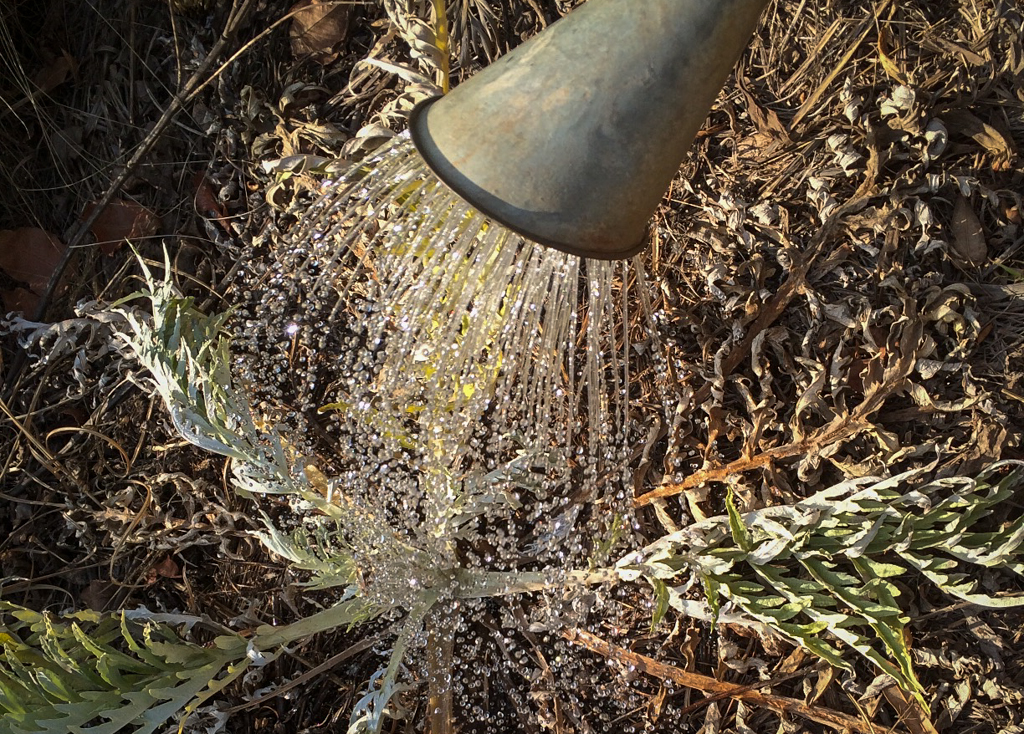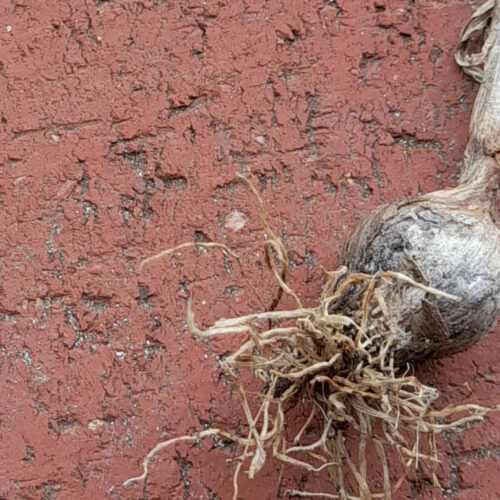How to beat hydrophobia
2014-11-13T04:57:49+11:00
Is your soil afraid of water? JUSTIN RUSSELL shares tips for combatting hydrophobic soil.
It’s drier than a popcorn fart here in south east Queensland. We haven’t had a decent drop of rain since March this year, and before that, November 2013. To add insult to injury we’ve just endured our second major heatwave of spring.
Gardening in a drought isn’t fun. I hate watching established plants die, so the bulk of my precious gardening time is spent watering plants just to keep them alive. Usually this is enough to see them through until rain decides to show up, but this drought is different. It comes hard on the heels of two floods (the most recent in January last year) that stripped goodness from the soil. As a consequence, the ground in some parts of my garden has become water repellent, or to use the technical term, hydrophobic.
To help re-wet the soil in these areas I’ve called for backup in the form of a soil wetting agent. In some circles, soil wetters have earned a bad rap, copping the blame for killing plants, destroying micro-organisms and even making the soil more hydrophobic. There’s an element of truth in this criticism, in that research indicates that some soil wetters can damage the soil and harm sensitive plants (especially those with ancient origins, such as ferns, orchids and members of the protea family). But the thing to bear in mind is that not all wetting agents are created equal.
Some are based on petroleum derivatives and alcohol, making them unsuited to organic gardens. Others contain only naturally occurring substances that readily biodegrade and cause no ill effects to the soil or plants. To help choose a suitable wetting agent check the ingredients. A popular brand that I use lists polysaccharides (natural humectants that can suck moisture from the air), soil surfactants (which aid in moisture penetration) and soil conditioners (including fulvic acid and seaweed extract).
If you still have concerns, it’s easy to make your own soil wetter from agar-agar, a naturally occurring gelling agent derived from various seaweeds and algae. You can buy it in powder form from health food shops. To make a soil wetter, simply mix the powder with boiling water to make a paste, then combine 250mL of paste with 4.5L of water. Apply to water repellent soil and potting mix. Agar is so benign that it’s most commonly used as a vegetarian substitute for gelatine.
Regardless of which product you choose, the best way to approach soil wetters is by seeing them as a bandaid solution to a more chronic problem. There’s no doubt they help water penetrate into hydrophobic soils. But they’re a short term fix only.
The best long term solution to most soil woes is to add organic matter, and the best sources of organic matter are composts, manures and plant residues (green manure). When these amendments fully decompose, they form humus, a stable material that can achieve a kind of soil yin-yang: Drainage and moisture holding ability.
Humus achieves this by virtue of a sponge like structure. It opens up clay soil, increasing aeration and allowing excess moisture to drain away. But like a sponge, it is able to soak up and hold water to a capacity of 100 times its own weight, gradually releasing moisture to plants as required. Above all, humus creates the ideal habitat for micro-organisms. If you’re going to solve soil hydrophobia, these little critters are what you need to encourage. They’re nature’s soil wetters, and unlike the wetting agents you buy from a shop, come with a host of benefits for your garden that cost not a single extra dollar.






